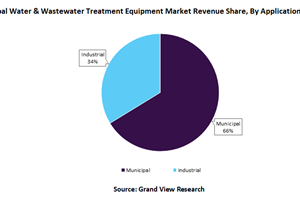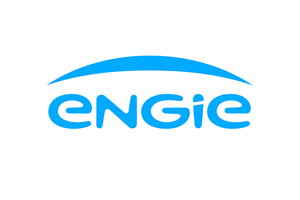Recent developments including the initiation of several large sewer tunnels across the Middle East, would seem to indicate a more general trend towards centralization when it comes to treating wastewater and disposing of storm water. There are several factors driving this approach. Rapid levels of urbanization and population growth within the region create a need for new infrastructure. Furthermore, large-scale treatment plants can treat wastewater cost efficiently and to the level of quality required, while also recovering valuable resources like treated water and sludge.
The case for a decentralized approach
Although a centralized approach is appropriate in a lot of cases, it brings some disadvantages and there are merits in considering a more decentralized approach as well. The main disadvantage of a central system, where wastewater is conveyed and treated outside a city, is that the product produced, Treated Secondary Effluent (TSE), then needs to be pumped to the location where it is needed, which, in most cases, is not close to where it is produced. This requires significant level of infrastructure and energy, and in many cases, it often turns out that the water is needed near where it started in the first place, within the city. With a centralized approach, there is also an increased risk of more widespread environmental pollution, if there’s any leakage within the centralized systems.
One of the core benefits of decentralization is that it can be done on different scales. Given that cost (as well as sustainability) is a major driver, there is clear value in considering a decentralized approach. The costs will differ based on local energy and water prices, so the point at which it becomes feasible from an economic point of view will vary. However, in the region, there are several good examples where a decentralized approach, in combination with source separation, have shown pay back periods of around 5 years in mixed-used sky-scrapers.
In this example, greywater, as produced by sinks, baths and showers, is separately collected and treated up to a quality where it can be reused for flushing toilets. Greywater represents about 60 percent of the total volume of water produced by a household, and as its significantly less polluted than mixed wastewater, the treatment costs are a lot lower. Re-using greywater also prevents the need to use high quality desalinated water to flush the toilet. The remaining black water can also be treated separately and to a quality that is fit for irrigation re-use locally. The largest disadvantage of such a system is that a double-collection and supply system is needed with the chance of cross-connections.
Assessing which approach works best for a city:


When it comes to deciding on the optimum approach to take, there are a number of steps which can help to assess the feasibility of either a centralized or decentralized approach, and which can be used to assess a specific area or a full development:
- Evaluate alternate water supply solutions and ways to optimize potable water distribution.
- Compare life cycle costs, feasibility, and sustainability of potential solutions
- Identify the pros and cons of each solution and identify a best fit alternative for your community.
- Support stakeholder participation with factual information, and analysis to gain acceptance of potential alternatives.
- Understand that each area or community may require a unique solution.
- Help your community maintain quality of life while meeting water demands.
Taking this incremental and step-by-step approach can deliver several important benefits:
- Increased efficiency of treatment and delivery of potable water.
- Optimized life cycle costs relative to community priorities.
- Improved community acceptance and understanding of the value of water.
- Consistent level of service for your customers.
- More sustainable potable water treatment solution.
Global success stories
Across the globe, Arcadis has worked on several projects where clients have asked us to evaluate the merits of a centralized or decentralized approach – some of these include:
- Hinkley, California: we worked on the successful evaluation and implementation of a replacement water supply option in a rural community, where groundwater hexavalent chromium levels were above the detection limit.


- Lubbock, Texas: after a detailed review, we made a recommendation to continue the use of granular activated carbon treatment to remove volatile organic compounds (VOCs) in alternative water resource in an un-incorporated area.
- Tohono, Arizona: we identified and implemented a cost-effective and sustainable arsenic compliance strategy, involving point-of-use reverse osmosis treatment for a community of more than 50 homes.
- US Environmental Protection Agency: to meet new arsenic regulation, Arcadis provided capital and operations and maintenance cost curves for a range of arsenic removal circumstances. This helped them to identify the best arsenic removal strategy for large, medium, and small water systems.
A complex question with no ‘one size fits all’ solution
As with most complex issues, there’s no single solution and each option has its own relative pros and cons. The biggest advantages of decentralization include; reduced transport costs, a security of water supply, flexibility to adapt to local changes (especially as the treatment systems are modular), resilience to natural disasters and acts of terrorism, and lower costs for both sewer and TSE distribution systems during the capital and operational expenditure phases.
Furthermore, in those cases where there’s no sewer system already in place, a decentralized approach is the obvious choice otherwise this would significantly delay the entire project. The biggest challenges with a decentralized system are securing public acceptance of this approach, the lack of regulation around this space which could may lead to a potential public health risk, as well as issues around responsibilities of different parties.
In conclusion, a decentralized system can work in co-existence with a central system but before making a definitive choice, it’s important to carry out a feasibility study for each new development, regardless of whether it’s in a remote area or in the city. In combination with source separation, a decentralized approach can significantly reduce the use of high quality, energy-intensive desalinated water. This in turn reduces the stress placed on the environmental while reducing a community’s overall water and carbon footprint.














